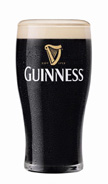Diageo considers relocating its Dublin brewery
The drinks giant is currently reviewing the closing of the Guinness brewery at St James’s Gate in Dublin and moving production to a new site outside the city.
Lion Nathan is doing it in Auckland, New Zealand, InBev will be doing it in Munich – so what’s special about closing down a plant and moving production elsewhere? Nothing really, were it not for the loss of heritage and, more importantly, for the loss of jobs. According to reports in the English media, Diageo, the parent of Guinness, is currently reviewing its total operations in Ireland, where it has four breweries and employs 2,200 people. The Dublin brewery turns out about 5 million hl of beer a year and is regarded, perhaps sentimentally, as the heart of the concern.
The review, expected to be completed next year, is aimed at producing a sustainable and profitable business in Ireland. However, there are fears of closures and job cuts. Dundalk, Kilkenny and Waterford are the other sites involved in the review.
Guinness and St James’s Gate have been synonymous since 1759 but with the plant showing its age and the surrounding area ripe for development Diageo sees the opportunity to finance the construction of a modern plant on a greenfield site, possibly close to the planned new Dublin port.
A tempting price tag of between EUR 700 million and EUR 3 billion (here the estimates vary widely!) for the 64 acre site is a major argument in favour of closure, although a Diageo spokesman emphasised that the history and culture associated with St James’s Gate formed an important part of the review.
At Diageo’s they do their sums with a very sharp pencil. That’s why in 2004 Diageo shut down Guinness’ Park Royal brewery in London and transferred production for the UK, its largest market, to the St James’s Gate site in Dublin – a decision which cost 90 Londoners their jobs, but increased the volume of Guinness produced in Dublin by 50 percent and awarded the Irish brewery with an investment in the order of USD 27.7 million.
This time, however, there is more at stake than just the potential closure of a brewery. Guinness sales in the UK and Ireland are down. At its interim results earlier this year (for the six months to the end of December), Diageo said sales in Europe had fallen by 7 percent, a further decline on the 3 percent drop it reported last summer. Add to that the announcement of the review and the media immediately began to surmise that the Guinness concern itself could be put on the block by Diageo.
It’s true that Guinness is struggling in the UK and in Ireland, which together represent 90 percent of Guinness’ sales in Europe. A number of reasons are cited. Diageo itself suggests that the biggest problem has been a shift in drinking patterns from consumption in the pub to people buying alcohol in supermarkets and drinking at home. This has affected Guinness disproportionately, as the drink is very much associated in Ireland with “the pint in the pub”. Another factor is that, as the Irish economy has boomed, people are spending more time at work or commuting, which has affected drinking habits. Other market observers think that the problems facing Guinness may be more fundamental. To put it bluntly, Guinness is finding it increasingly difficult to recruit new customers, especially younger ones.
There is little doubt about it: Guinness is an acquired taste, and young people used to acquire it from their fathers. Today, youngsters look for drinks, along with fashion and music, that differentiate them from their parents. That, coupled with the much greater variety of brands on offer in Ireland today, has left Guinness with the problem of how to replenish its customer base. In particular, the onslaught of cider, in Ireland as well as in the UK, has left many brewers, not only Diageo, scratching their heads. Guinness’s solution has been to invent variations on the brand, to get people used to drinking Guinness. But what if new consumers just don’t like the look and taste of Guinness, whatever the variant? The trouble is, Guinness is still by far the largest beer brand in Ireland. And as experience tells us: there’s only one way to go when you have that sort of dominance - and that’s down.
The London Times recently reported that the sales decline in its home markets has prompted talk in the City of London that Diageo may be better off selling Guinness than persevering with it. Many observers have questioned for years the rationale of having Guinness under the same roof as Diageo’s spirits brands, which include Smirnoff, Gordon’s and Johnnie Walker.
There would be no shortage of buyers for Guinness. Despite the speculation, Diageo is committed to retaining Guinness. But if the world’s major drinks group fails to arrest the slide in Britain and Ireland, the calls for a sale will surely become louder.
In the meantime, Diageo has to decide as to what to do with its St. James’ Gate brewery. Not an easy task if you have the money-men breathing down your neck.


